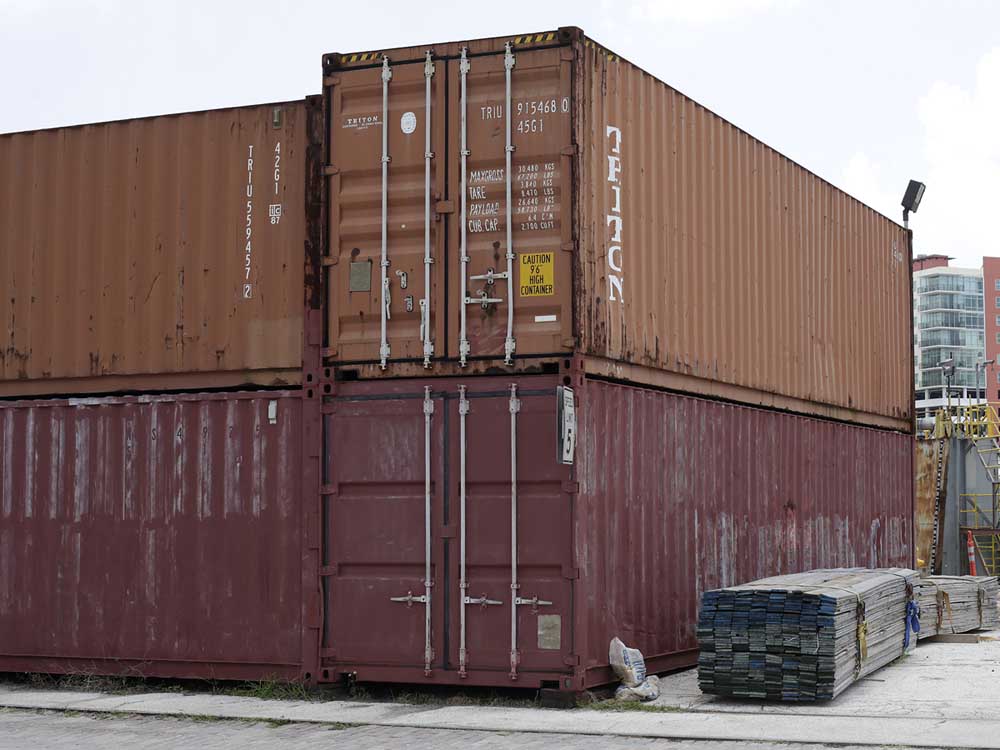Prineville looks at rules surrounding shipping containers as homes
Published 12:00 am Tuesday, June 14, 2016

- James Borchuck / Tampa Bay Times via APShipping containers, such as these arranged to frame a bar in Florida, are being used for a wide variety or architectural purposes.
Prineville is in the middle of a debate about people living in shipping containers..
At the city council’s most recent meeting last month, the discussion item — “Container homes,” according to the agenda — was brought up with council members so the city could have some direction in regard to “a number of calls” about whether the storage units could be used for residential purposes.
“There’s been TV shows and talk about container homes; they’ve become a new type of housing,” said Phil Stenbeck, the city’s planning director, on Friday. “And when you talk about container homes, they come in a variety of sizes and styles — some are expensive and some aren’t; some are used for business and some aren’t. Well, we’ve had folks approach us about a manufactured container home-style park, container homes going on residential lots, and being used for business. There’s been different types of discussion coming at us, and the planning commission wants to put some code language together.”
As it is now, container homes aren’t specifically addressed in the city’s zoning rules or municipal code, Stenbeck said.
He said the planning department wants to change that as people begin to express more interest. Council members, who told Stenbeck to come back with some draft proposals about how shipping containers can be used, agreed the city should have some kind of position.
“My concern is the cosmetics, the looks of it,” said council member Jason Beebe. “A container isn’t very sightly — and then if you stack 10 of them all together and make an elaborate house out of it — sure it’s cool, and I’ve seen some nice ones. But I can understand the concerns in a residential area if you put one of those right in the middle.”
“With the affordable housing conversations we’re having, let’s do what we can, but I hate to see it become so restrictive,” said council member Jeff Papke. “I’ve had conversations with people who say, ‘We ought to buy a chunk of property and we can put tiny homes on it or container homes.’ And boom — we could have a great development. I just don’t want to see us get too restrictive where we do have options and we all of a sudden have put those options off the table.”
According to Stenbeck, one of the inquiries the city’s planning department received involves a situation just like the one Beebe described. Stenbeck said someone had been interested in putting a container home on the last available lot in a residential neighborhood.
“This was a neighborhood where there was one lot remaining in the subdivision,” he said. “You had 2,400-square-foot homes — kind of a nice place, and someone was wanting to bring in a container home. It’s a matter of providing some guidance on how that works.”
Lance Romine, who owns Lineshack Log Structures in Prineville and makes residential log cabins for his day job, said he’s been “messing around” with shipping containers for the last four or five years to see what kind of potential they have as residential dwellings. He’s working on a prototype container home, he said, but in the future he hopes to start on bigger projects — like a 50-unit shipping container rental complex.
“It’s a $4.3 million project,” he said, noting the complex wasn’t being designed as a low-income housing development. “And it’s not something that’s popping quite yet — the funding isn’t there — but the need is. I’ve been working with the city to see what I need to do, even though it hasn’t gone through all the planning or anything. There’s a definite need though — there’s no place to rent in Prineville. If someone puts a house to rent on Craigslist, in an hour they’ll have 15 calls.”
— Reporter: 541-617-7829,
awest@bendbulletin.com






